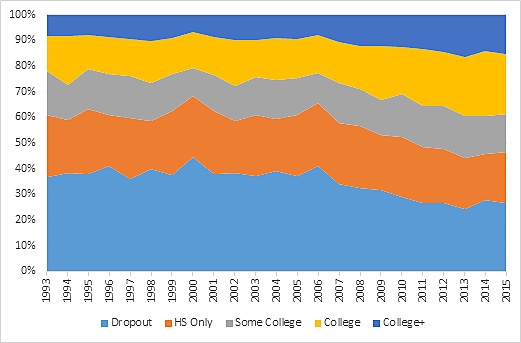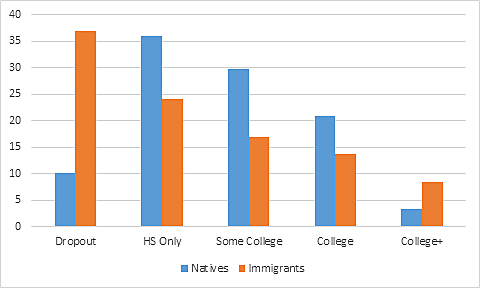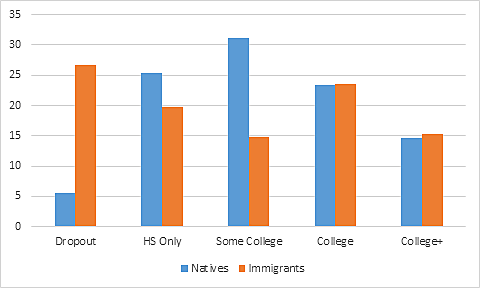Many have started supporting a so-called merit-based immigration system since President Trump mentioned it a few months ago. A merit-based immigration system could mean just about anything but most define it as a system that admits more highly skilled and educated immigrants, as in Canada, and fewer lower-skilled and family-based immigrants as currently enter under America’s immigration system. Despite the lack of any significant legal or regulatory changes, new immigrants are becoming more highly educated immigrants over time even relative to natives.
The share of admitted immigrants who have at least a college education increased from 22 to 39 percent 1993 to 2015 (Figure 1). Over the same period, the share of admitted immigrants who are high school dropouts dropped from 37 percent to 27 percent. Virtually all of that change occurred since 2007 when illegal immigration slowed down and the number of Chinese and Indian immigrants began to grow relative to Mexicans. Although the American system does not select for education, it does not intrinsically favor the uneducated either.
Figure 1
Share of New Immigrants by Education & Year of Admission
Source: Current Population Survey and author’s calculations
Immigrants in 1993 were less educated than natives in that year when controlling for age (Figure 2). However, new immigrants were more likely than natives to have a college or above education by 2015 (Figure 3).
Figure 2
Share of New Immigrants and Natives by Education, 1993
Source: Current Population Survey and author’s calculations
Figure 3
Share of New Immigrants and Natives by Education, 2015
Source: Current Population Survey and author’s calculations
The percentage of dropout immigrants is still high in the United States relative to natives and to new immigrants in Australia and Canada. However, if this trend continues without any legal reforms then education of newly admitted immigrants in the United States will look more and more like those of countries with so-called meritocratic immigration systems. Rather than only counting immigrants under the employment-based green card category as meritocratic, the education and skills of all immigrants should be considered.



